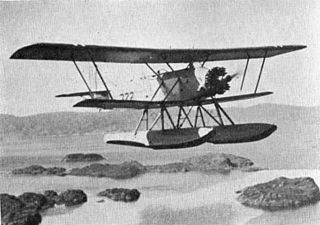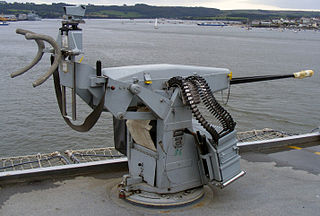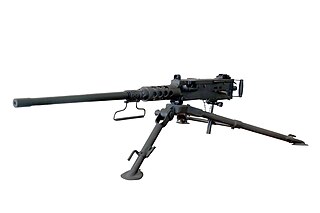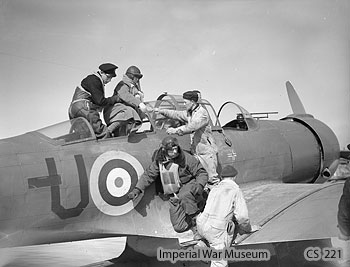
The Heinkel He 115 was a three-seat World War II Luftwaffe seaplane. It was used as a torpedo bomber and performed general seaplane duties, such as reconnaissance and minelaying. The aircraft was powered by two 960 PS BMW 132K nine-cylinder air-cooled radial engines. Some later models could seat four, had different engines or used different weapon arrangements.

The Royal Norwegian Air Force (RNoAF) is the air force of Norway. It was established as a separate arm of the Norwegian Armed Forces on 10 November 1944. The RNoAF's peacetime establishment is approximately 2,430 employees. 600 personnel also serve their draft period in the RNoAF. After mobilization the RNoAF would consist of approximately 5,500 personnel.
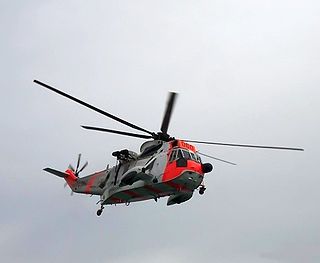
Sola Air Station in Sola municipality in Norway is operated by the Royal Norwegian Air Force. Air Wing 134 is stationed at Sola along with helicopter Squadron 330.

No. 330 Squadron RNoAF is a helicopter unit of the Royal Norwegian Air Force (RNoAF) and is Norway's military search and rescue service. The squadron operates ten Westland Sea King helicopters based at six airbases along the coast. Headquartered at Sola Air Station, the squadron has detachments at Rygge, Florø, Ørland, Bodø and Banak. The unit's primary duty is search and rescue (SAR), with secondary duties consisting of air ambulance, disaster relief and special operations support.
No. 330 (Norwegian) Squadron was a Royal Air Force aircraft squadron formed at RAF Reykjavik, Iceland on 25 April 1941 manned by exiled Norwegian aircrew and, initially, Norwegian procured aircraft. The squadron operated throughout the Second World War.
The Marinens Flyvebaatfabrikk M.F.2 was a two-seat military biplane floatplane produced by Marinens Flyvebaatfabrikk in 1915 and 1916. It was designed by naval captain Halfdan Gyth Dehli, based on former models by French designer Maurice Farman and improvements by Einar Sem-Jacobsen of the Norwegian Army Air Service's aircraft factory Kjeller Flyfabrikk.
The Marinens Flyvebaatfabrikk M.F.3 was a reconnaissance floatplane built by the Royal Norwegian Navy Air Service aircraft factory Marinens Flyvebaatfabrikk in 1917. The aircraft was financed by extraordinary appropriations during the First World War and served until October 1924.
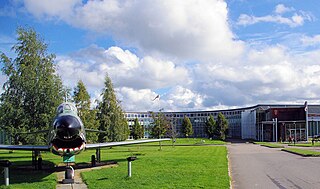
Norwegian Armed Forces Aircraft Collection is a military aviation museum located at Gardermoen, north of Oslo, Norway. The founding of the Norwegian Aviation Historical Society in 1967, gave the first boost to the idea of preserving aircraft in Norway. The Collection's Heinkel He 111 and Northrop N-3PB are among the aircraft traced, recovered and restored at the instigation of the NAHS. From the latter part of the 1970s onwards, a considerable number of historical aircraft were assembled in an old ex-Luftwaffe hangar at Gardermoen and from the mid-1980s the public were admitted to the hangar during summer. Most of the activities were - and still are - based on voluntary effort.
The Marinens Flyvebaatfabrikk M.F.4 was a biplane floatplane built by the Royal Norwegian Navy Air Service aircraft factory Marinens Flyvebaatfabrikk from 1918. The aircraft was the first purpose-built trainer aircraft in Norwegian service and served until retired in October 1924.
The Marinens Flyvebaatfabrikk M.F.5 was a two-seat biplane floatplane built by the Royal Norwegian Navy Air Service aircraft factory Marinens Flyvebaatfabrikk from 1918. The M.F.5 was the first tractor configuration aircraft designed and built in Norway. During almost eight years of service the M.F.5 was mainly used as a reconnaissance aircraft, although one example saw service as a trainer.
The Marinens Flyvebaatfabrikk M.F.7 was a two-seat biplane floatplane built by the Royal Norwegian Navy Air Service aircraft factory Marinens Flyvebaatfabrikk in 1923. The M.F.7 was designed and employed as a trainer aircraft, and functioned as a temporary solution until a better aircraft was designed. Soon after it entered service, the aircraft factory's experience with the M.F.7 led to the construction of the Marinens Flyvebaatfabrikk M.F.8, which remained in service as the main trainer aircraft of the Royal Norwegian Navy Air Service until the German invasion of Norway in 1940.
The Marinens Flyvebaatfabrikk M.F.6 was a two-seat biplane floatplane built by the Royal Norwegian Navy Air Service aircraft factory Marinens Flyvebaatfabrikk in 1921. The M.F.6 was designed and employed as a trainer aircraft. The type was the last pusher configuration aircraft in service with the Royal Norwegian Navy Air Service. The M.F.6 functioned as a makeshift solution until a more modern tractor configuration aircraft could be built. The type was retired once a more permanent solution to the Royal Norwegian Navy Air Service's training needs was found in mid-1920s.

Tromsø Airport, Skattøra, also known by its military designation Skattøra Naval Air Station was a water aerodrome and air base situated at Skattøra in the city of Tromsø in Tromsø Municipality in Troms county, Norway. Construction began in 1938 and the aerodrome was in use until 1975. At its peak it was the largest water airport in Northern Europe.

Ålesund Airport, Sørneset was a water aerodrome and later heliport situated at Nørvevika and later Sørneset in Ålesund, Norway. The airport was, to a varying degree, used between 1929 and 1979. It has since been demolished.

Haslemoen Airport is an airport situated at Haslemoen in Våler, Norway. Since 2003 the airport only features a 585-meter (1,919 ft) grass runway used mostly by ultralight aircraft and general aviation aircraft. This is located next to a closed 1,800-meter (5,900 ft) formerly military runway.

Flesland Air Station is a military air base situated at Flesland in Bergen, Norway. Part of the Royal Norwegian Air Force (RNoAF), it shares a 2,990-meter (9,810 ft) runway with Bergen Airport, Flesland. The air station has since 1999 had a mobilization status and is only manned with six employees. Its main structure is an subterranean hangar with space for 25 fighter jets.
Mette Grøtteland became the first female fighter pilot in the Royal Norwegian Air Force after qualifying to fly jet fighter aircraft in 1992.





